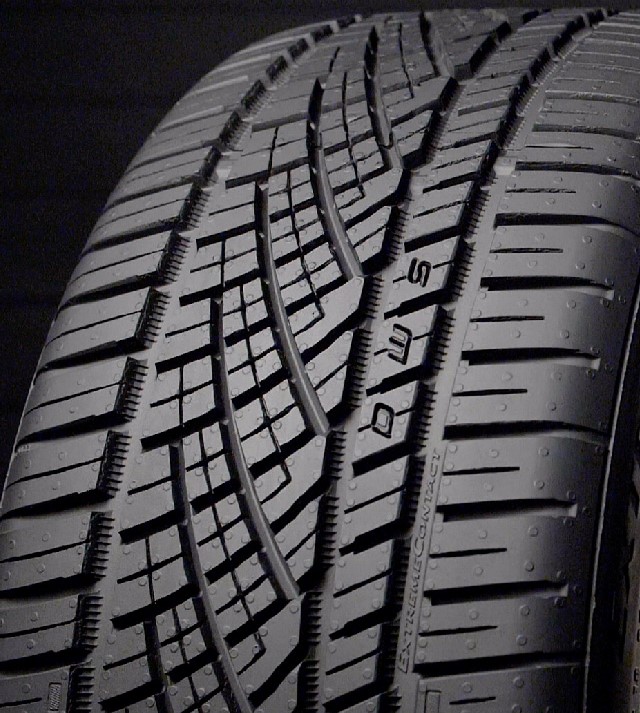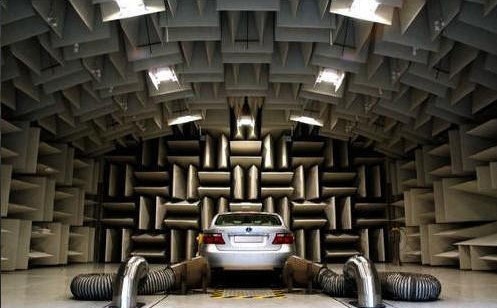
|
B
arry's
T
ire
Tech This is a series of articles on the technical aspects of tires, their care, and usage. My primary purpose in these articles is to help people understand tires and thereby reduce the risks we all face every day. ..........and since tires is just about the only thing I know about.......... Please drop me a note if you have a topic you want to see: Barry@BarrysTireTech.com |
|
Tire Noise and Noise Testing:
I am going to talk about how tire manufacturers try to reduce the noise that tires generate. That may help you select a tire that doesn't generate as much noise as others. The operative word here is boring. Boring tread patterns generate less noise than exciting, futuristic looking patterns. And it's the tread pattern that is making the noise. The casing doesn't play a significant role in noise generation (except if it sets off a body panel.) EXCEPT that a few more psi will tend to reduce the noise by stiffening up the entire tire. HOWEVER, The road also contrubutes to noise - and worse, the tread pattern can interact with the macro texture of the road surface in unpredictable ways. A side note: This has been the most difficult article I have ever tried to write, because there are sooooo many exceptions, and sooooo little actual data available to the public. Plus it is sooooo difficult to describe. What you should get from this page:
|
|
The photo above is of a semi-anechoic chamber. Semi (not complete - notice the smooth floor) and anechoic (without echo). The wedges on the ceiling and floors are sound absorbing material. Obviously you can't drive a car onto those wedges and it is common for there to be a dynamo wheel imbedded in the floor. A chamber such as this one is used to research all kinds of noise generating things, including tires, without the influence of the wind or the pavement. Please note: This photo seems to be testing car noise. Tire noise usually is done with a tire holding rig, not a vehicle. To the right is an outdoor setup. It's a smooth pad instrumented with microphones. This is a common set up for vehicle testing where even the driver's head is instrumented as noise can come through the vehicle and it is important to know exactly what the driver is experiencing. |

|
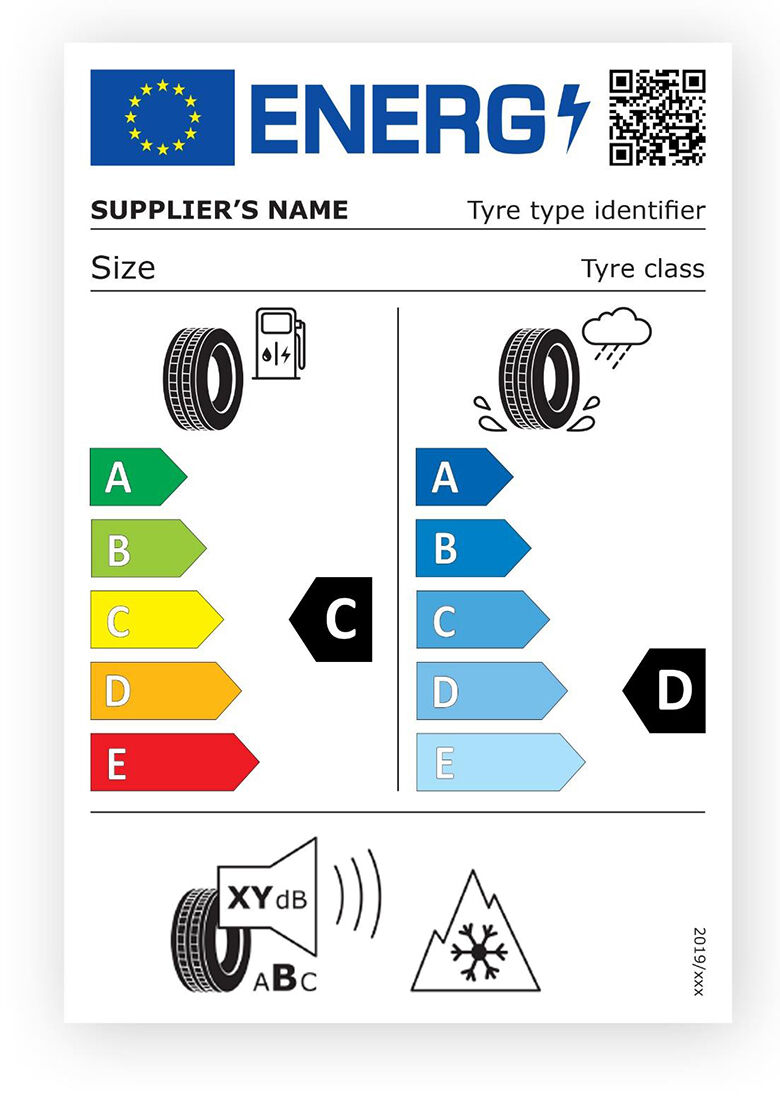
|
It should be noted that the EU (European Union) requires tires to have a label that indicates the results of an external, engine-off, pass-by test on a test surface that meets certain standards. A sample of the label is to the left. There is no noise requirement for the US, but there appears to be a tire noise regulation (limitation) in Japan. However, the EU is currently (Nov. 2022) the only place where tire noise values are published and available to the general public. Please note: This is a moving target and likely to change. I'll update the webpage as I find out about those changes. |
|
The Science: You would think that a smooth tire (aka a slick - one with no tread pattern) would produce little or no noise - but you would be wrong. Partially because of the texture of the road surface - and partly because moving air makes noise. That means that even a slick on a smooth surface is going to make noise. Look at the image to the right and observe that the air (yellow arrows) has to move out of the way of the rolling tires - and what I didn't show you is that the air has to return back behind the rolling tires. All of that makes noise. |
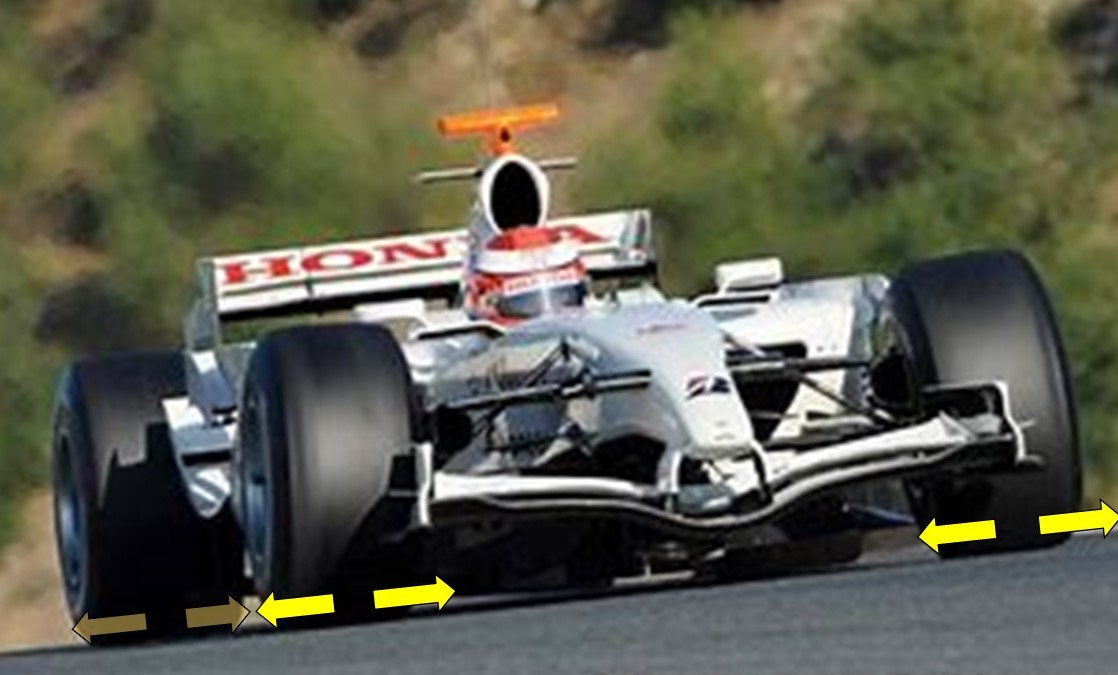
|

|
Further, the texture in the road surface produces pops and hisses as the tire rolls into the surface, and wooshes and smacks as the tire rolls off. |
|
But if there were a way to allow the air to more easily move out of the way, the noise would be less, right?
Yes, and interestingly, the way one designs such a feature into a tire can also allow water to more easily move out of the way, too! And that is with grooves - smooth ones would be better than more complex ones. And the less sipes and cross grooves the better! Unfortunately, cross grooves and sipes improve wet and snow traction - as does non-straight sided and crooked tread grooves - so using as few of each as possible is key to making a quiet tire. |
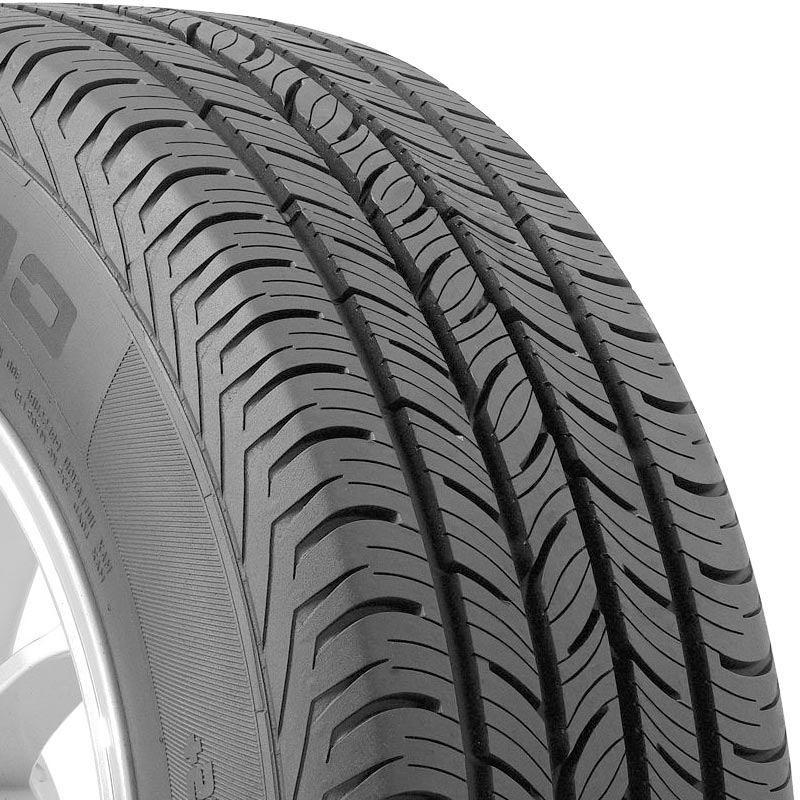
|
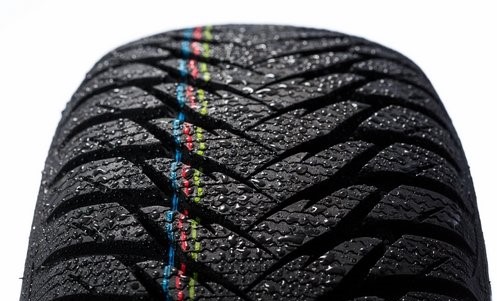
|
What that means is that tread patterns that excel in wet or snowy conditions are going to be noisy! The more broken up the tread pattern, the worse the noise. In other words, boring is beautiful when it comes to noise! |
|
Noise is a high pitched vibration. So what you feel in the steering wheel is similar to what you hear with your ears. The difference is the frequency and where you sense it. Large tread elements produce low frequency noise - and if the frequency is low enough, you can feel those. Small tread elements produce high frequency noise - and here's the kicker: If you mix large and small elements, it fools the ear into thinking the noise level is lower. (Neat, huh!) Put a different way, if you can somehow vary the size of the tread elements, it sounds less noisy, even though the amount of energy being generated is the same. Look at the image to the right and see that principle in action. A tread can be designed with different "pitches" - That is, different repeatable elements of different size - and the net effect is that not only is the noise perceived to be lower, and if done correctly, the tread pattern doesn't reinforce a given vibrational frequency. |

|
| There are a lot of techniques tire manufacturers use to reduce noise, while still making interesting tread patterns.
To avoid generating noise, it is common for tire manufacturers to avoid sharp, acute corners that are less supported - meaning less rigid. Obtuse corners are better. One of the ways to turn an acute corner into an obtuse corner is to cut off the corner. See the illustration to the right. Both started out the same size. |

|

|
Another way is to put a piece of foam inside the tire. The principle is that the air chamber inside a tire tends to develop echoes and can reinforce certain frequencies. But what I find interesting is that this has been done repeatedly by different tire manufacturers and always for a vehicle manufacturer (not always the same one), and as soon as that particular make/model tire is no longer being supplied to the OEM, it gets discontinued. Makes me think the buying public isn't interested or that this doesn't work as well as advertised! I wish there were some test statistics to show how much that foam actually reduces the noise level. Update Nov, 2022: Here's a link to a Car and Driver Test where they concluded the noise reduction with a foam insert wasn't very much. Car and Driver: Tested: Do acoustically insulated tires really hush road noise? |
| There are sound deadening materials that can be applied to body panels to reduce noise. The photo to the right
is a sample.
There are 2 ways this insulation reduces noise:
Sound insulation materials require getting access to the body panels - and that means removing a lot of upholstery. However, it is effective. |

|

|
And I can't leave this subject without showing the most interesting bit of equipment I have ever seen - the Aachen head (to the left). It is named after the city in Germany where it was developed. It simulates what a person hears to a remarkable degree - plus it looks really cool! |
|
Noise in worn tires: In my opinion, this is almost exclusively caused by irregular wear - and irregular wear is mostly caused by misalignment - typically toe. Yes, there are tires that are more susceptible to this than others, but it doesn't happen if the alignment is good. Update - Dec 2022: What followed after this was a discussion about misalignment. Because misalignment shows up so often and in other topics, I gave it its own page - Here |
|
|
